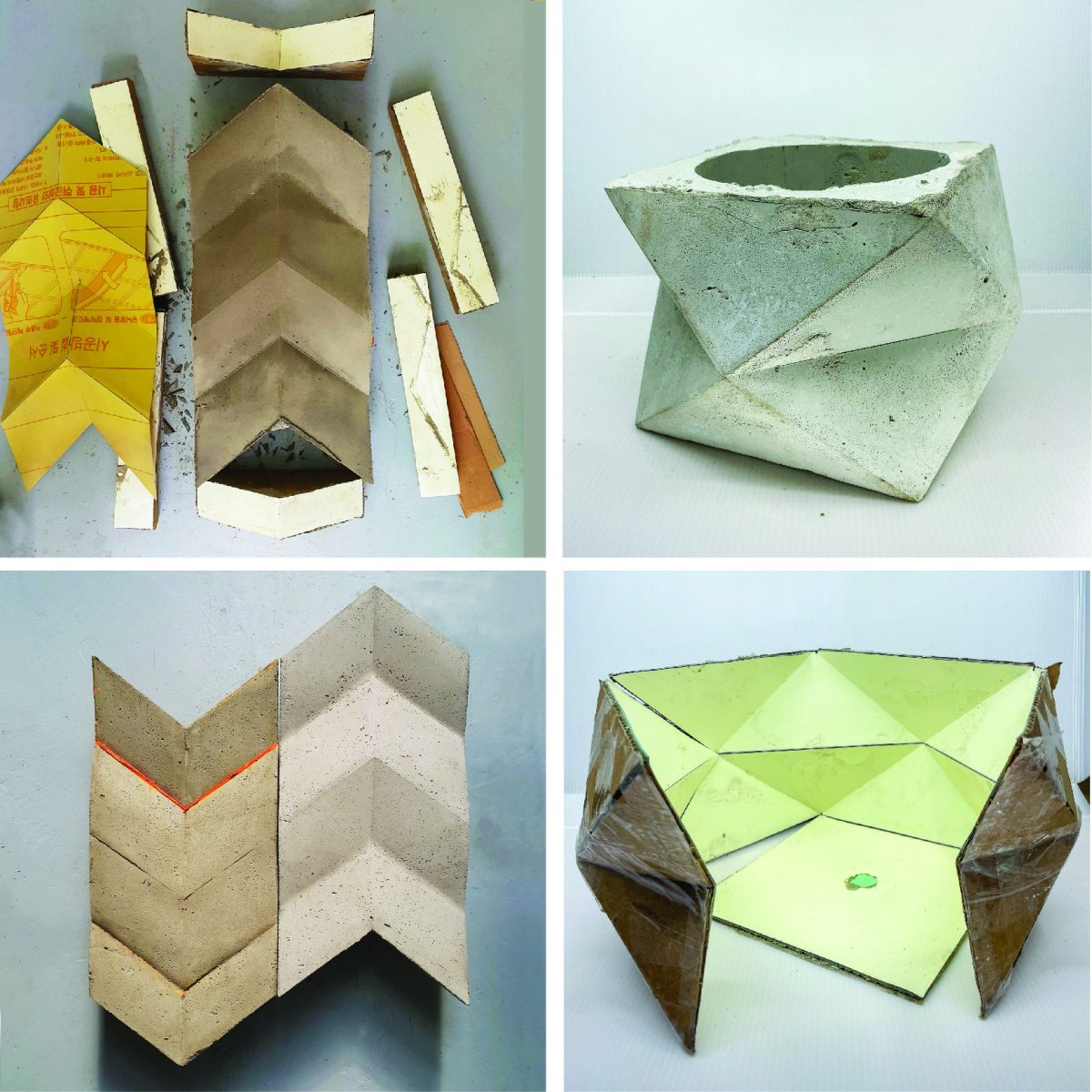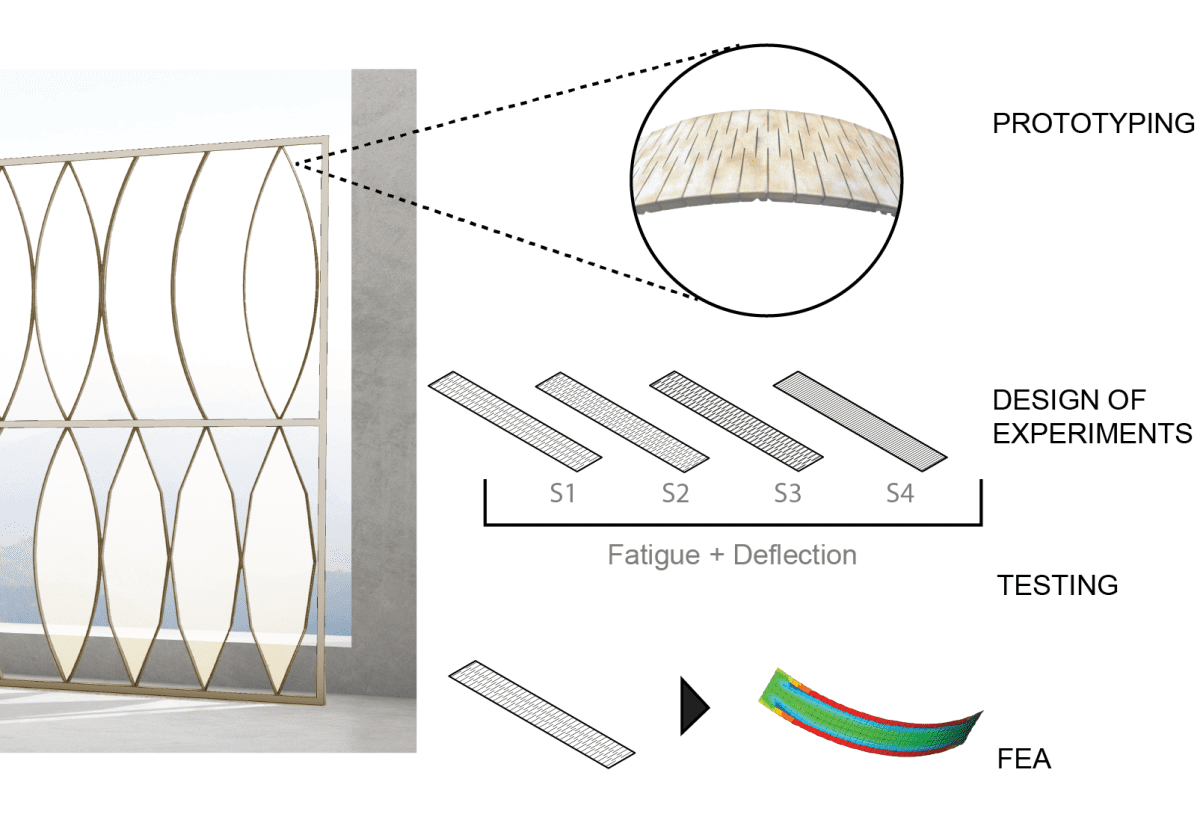Sustainable Building System Integration

Low-cost Cardboard Molds for Precast Concrete Building Components
contact: Julio Cesar Diarte Almada
email: juliodiarte@uncc.edu
Precast concrete building components are often produced using expensive and hard to recycle metal or wood molds. Consequently, fabrication feasibility of precast components depends on industrial mass production becoming inaccessible to small builders or very expensive for unique designs. The goal of the project is to develop durable molds made of waste or brand-new cardboard products to lower the cost and increase recyclability. The work explores different design and fabrication techniques to fabricate molds including origami patterns to make flat-pack molds, layering and grid pattern reinforced molds, and pulping to make solid molds. Other explorations include waterproofing techniques, and development of algorithmic design tools to configure and generate templates. Using cardboard as the main material to make molds allows fabrication of building components with complex forms or irregular surfaces at a low-cost and with potential low environmental impact. Possible applications include facade panels, modular blocks for walls or columns, steps, waffle slabs, and beams. Part of the project was showcased at the 2021 Seoul Biennale of Architecture and Urbanism – Crossroads: Building the Resilient City.
Read more →

Cardboard Architecture: Eight Decades of Exploration in Academic Research and Professional Practice 1940-2019
contact: Julio Cesar Diarte Almada
email: juliodiarte@uncc.edu
Explorations in the use of cardboard products in architecture have existed since the 1940s. However, it was not until the early 1990s, when Shigeru Ban’s work emerged when cardboard products became a potential material for architecture. Since then, cardboard use in architecture has been continuously growing worldwide, and Ban’s cardboard buildings have now achieved important recognition. This article reviews cardboard architecture works in academic research and professional architectural practice in the last eight decades to lay a foundation for designers to get ahead in cardboard for architecture. Cardboard products could contribute to an increase in environmentally friendly and affordable architecture because they are recyclable, low-priced, and have relatively good strength to sustain loads, among other potential advantages for construction. The study summarizes the fundamentals of cardboard architectural design and diverse strategies proposed by different authors to decrease cardboard strength degradation due to the material’s weaknesses.
Read more →

Kinetic Shading System: Design and Fabrication Strategies using Kerf Bending Techniques with Bamboo (in Collaboration with Elena Vazquez):
contact: Julio Cesar Diarte Almada
email: juliodiarte@uncc.edu
Climate change has forced architects and researchers to improve building envelopes to reduce energy consumption and increase resilience. Creating adaptable shading systems is a way to retrofit existing buildings and protect new ones. The complexity of traditional kinetic systems has driven researchers to propose using smart materials as actuators; these materials, however, present limited kinetic capabilities and large actuation timescales. As a result, few studies have shown building-scale implementation and real-time actuation control. Compliant mechanisms rely on the flexibility of their members to achieve motion and can achieve large deflections; these systems, however, have yet to be explored in low-carbon materials such as wood-based ones. The project’s goal is to develop a kinetic compliant shade using kerf bending techniques–creating flexible forms from rigid panels. To develop the kinetic screen, we propose to use bistable compliant thin bamboo beams. The project aims to reduce buildings’ carbon footprint by offering kinetic shade systems that can be adjusted to different environmental conditions. The Research Incentive Award will allow us to develop design and fabrication strategies for kinetic shade systems using Life Cycle Analysis, Design of Experiments, and prototyping research.

High-Performance Low-Tech
Environment Box
contact: Liz McCormick
email: emccorm4@uncc.edu
To explore the hygrothermal behavior of potential enclosure materials and assemblies, McCormick designed and constructed a custom tabletop hotbox, which is easily and affordably replicated. Through extensive testing and biological translation, the result is a repeatable method of exploring natural phenomena and choreographing moisture drive in building materials, as inspired by plant biology.
Read more →